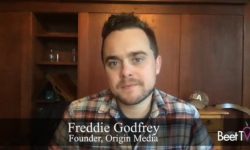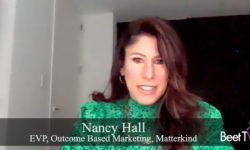CAPE TOWN — For a couple of years, it was the key issue facing brands – ensuring their “brand safety” in automated advertising environments.
Now technology has helped iron out kinks in where ads get placed – but the man leading the charge says “brand safety” concerns are still around, they have just morphed.
In this video interview with Beet.TV, John Montgomery, GroupM’s EVP and advisor on brand safety, discusses how brand safety is changing into something else.
From ‘safety’ to ‘suitability’
Montgomery says brand safety is no longer just about protecting the image of a brand – now it also contributes to the effectiveness of an ad.
Montgomery says the “safety” concerns are being “elevated” to dwell on “suitability” – more broadly examining the rights and wrongs of a particular piece of inventory for an advertiser.
“Your brand may run in a safe environment but, if it’s not contextually suitable, it’s not going to work nearly as hard,” Montgomery says.
“So the 4A’s, GARM (Global Alliance for Responsible Media) and other groups are hard at work with identifying suitability categories and standards that everybody will agree to and build into their technology to allow us to run in suitable areas – not just safe areas, but suitable areas as well,” he explains.
Stepping up
It’s a step onward from the 2017 outcry about YouTube placements, when many brands became upset at lack of control over placements bought in automated systems.
“I think the platforms have stepped up with technology and AI to make it much safer for brands,” Montgomery says.
“The chances of a brand being positioned adjacent to harmful content are now much diminished, compared to four years ago.”
GroupM and Montgomery even developed their own in-agency tool, Brand Safety Risk Assessment, to help clients determine the brand safety of inventory.
Risk analysis helps guide clients in the brand safety process https://t.co/Lmxum3jSpb#loopme #brandsafety
— John Montgomery (@taxidodger) December 14, 2020
Four new considerations
Montgomery says brand suitability concerns are taking on four new shapes.
- Applying a brand suitability model to align messaging with the most appropriate brand-safe environments.
- Advertisers balancing audience delivery and performance against creating health in the wider ecosystem by denying fraudsters, pirates and purveyors of misinformation.
- Brands are asking themselves: “Is avoiding direct adjacency to distasteful or negative news enough to satisfy my communication needs whilst preserving brand values?”
- Brands having to consider safety of audiences.
On that last point, Montgomery says they are asking themselves: “Do I want to use my media schedule to send a signal to potential partners that protecting brands is not enough… ?
“… that consumer safety is paramount and that bias against protected groups, digital privacy, graphically obscene content and irresponsible treatment of debated social issues must be elevated to the status of priority, beyond revenue generation?”
Closing the loop
That set of concerns is far wider than that which first reared its head around 2017, when outcries by brands over widely-reported placement next to controversial content prompted a wave of demand for greater control.
In an automated ad world, advertisers want to be sure they can guard against mess-ups.
Montgomery is also working outside of GroupM to implement such solutions. In December, he joined the data advisory board of LoopMe, a company whose software closes the loop from ad exposure to outcome attribution.
LoopMe Welcomes MediaLink’s Wenda Harris Millard and GroupM’s John Montgomery to Data Advisory Board
“Companies like LoopMe are putting a huge effort into brand suitability and a targeting engine to help clients put their advertising in front of the right people, in the right context, at the right time,” Montgomery says.
“What LoopMe’s in-flight optimization does to help this is to measure and adjust the flight whilst the campaign is running, versus waiting until the end of the flight, to know if your campaign moved the needle.
“This not only saves large chunks of revenue that would have been wasted on non-optimal impressions, but it makes the advertised brand more agile and more responsive.”
You are watching “Outcomes-Based Advertising: Connecting Ad Exposure to Business Results,” a Beet.TV leadership video series presented by LoopMe. For more videos, please visit this page.











































